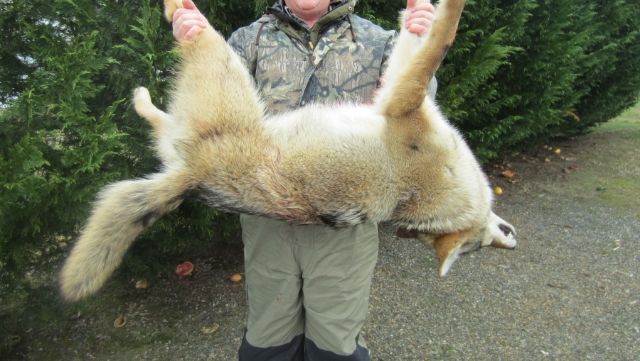NG ALUM
Banned
http://en.wikipedia.org/wiki/Red_wolf
The link above is a very interesting read! Now Im starting to think I may have something more similar to mixbreed "brushwolves" than coyotes. I don't know where the idea that coyotes are solitaire creatures came from but they definately are not at my farm. I guarantee you that I could get a couple different packs of 5-10 howling tonight and we often see them running through the woods 3-5 at the time. I have only ever seen just one on 2 occasions. Also they do hit those low base notes when they get to howling and you'd swear there was a wolf in there somewhere. I shot a big male a couple weeks back that topped out at 60lbs!
The article I provided the link to says that red wolves are 76-80% coyote and 24-20% grey wolf. IF thats the case there could be so much resemblance you don't know what you've got! Check it out!
The link above is a very interesting read! Now Im starting to think I may have something more similar to mixbreed "brushwolves" than coyotes. I don't know where the idea that coyotes are solitaire creatures came from but they definately are not at my farm. I guarantee you that I could get a couple different packs of 5-10 howling tonight and we often see them running through the woods 3-5 at the time. I have only ever seen just one on 2 occasions. Also they do hit those low base notes when they get to howling and you'd swear there was a wolf in there somewhere. I shot a big male a couple weeks back that topped out at 60lbs!
The article I provided the link to says that red wolves are 76-80% coyote and 24-20% grey wolf. IF thats the case there could be so much resemblance you don't know what you've got! Check it out!


